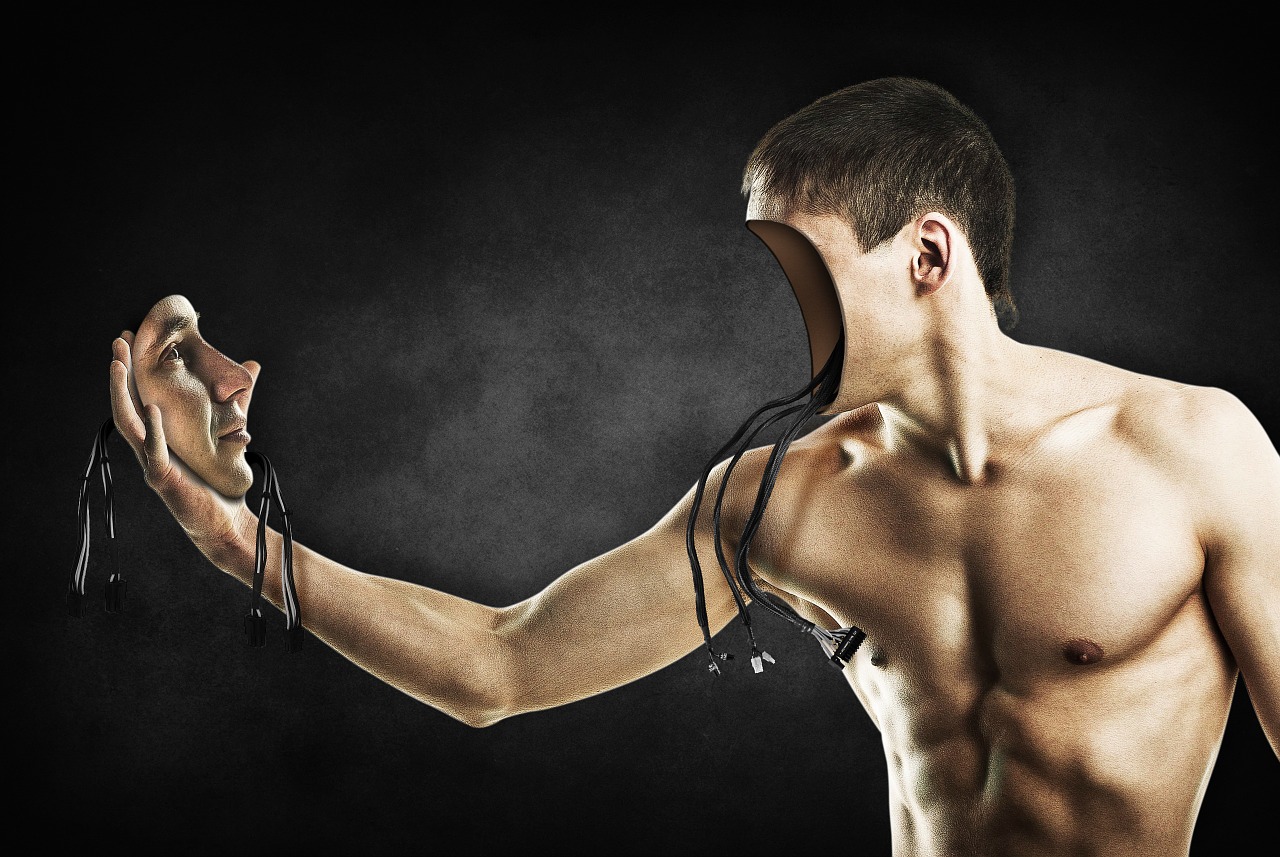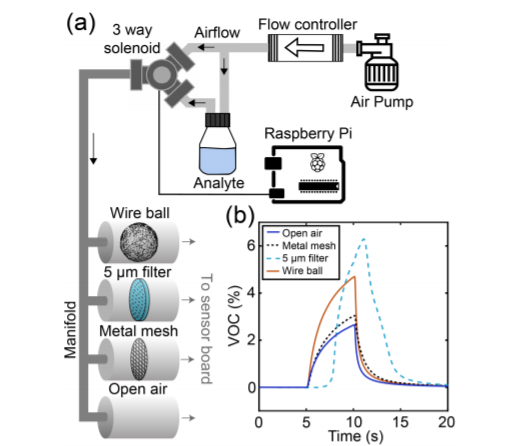

News
Engineers develop bio-machine nose that can “sniff” and classify odors
Engineers from Brown University in Rhode Island have invented a small, low-cost sensor device which is able to classify odors using input from a mimicked “sniffing” action. It’s called TruffleBot, and it’s here to raise the bar on electronic “noses”. It also works with Raspberry Pi, an inexpensive mini-computer popular with electronics hobbyists, students, and others in the “maker” crowd.
Generally, an electronic nose is a device comprising several chemical sensors whose results are fed through a pattern-recognition system to identify odors. In traditional devices, the chemical responses alone are used for classification. The engineers behind this invention, however, decided to incorporate non-chemical data to account for the mechanics of the smell process used in nature for a better result. Their experiment proved successful with an approximate 95-98% rate of accuracy in identification compared to about 80-90% accuracy with the chemical sensors alone.
According to the inventors’ published paper, the guiding knowledge that made TruffleBot so useful in odor detection was this: Different smells have different impacts on the air around them, and measuring the variations enables more accurate identification. Did you know that beer odor decreases air pressure and increases temperature? The changes are slight, but TruffleBot can sense them.
This is where the “sniffing” comes in. The device uses air pumped through four obstructed pathways before sending it through chemical and non-chemical sensors. Odors impact the air surrounding them, and the movement of the air through obstacles (“sniffing”) enables the odors’ impact to be more accurately measured.
A chart detailing how TruffleBot processes odors. | Credit: Brown University
So, where exactly would one need an electronic nose? Everywhere. Devices with the chemical sensing ability are being used in agriculture, military, and commercial applications to identify all sorts environmental data. Essentially, electronic noses are useful in any industrial application that has odor involved.
Nasal Marketing
Did you know that it’s possible to trademark a smell in the United States? It’s not easy to accomplish given the somewhat difficult requirements to meet, but a few such things exist. The fact that Play-Doh, a product whose smell is probably one of its most distinct features, was granted a trademark for the scent only this year is testament to the difficulty of obtaining such a mark. However, the fact that some companies have found enough incentive to make sure only their company can give your nose a particular chemical experience tells a lot about that sense’s importance from a marketing perspective.
On one hand, utilizing smell in marketing might seem a little manipulative. After all, creating an air freshener that reminds someone of a beloved, deceased relative on purpose might not seem like a particularly ethical way to target their money. On the other hand (or bigger picture), however, the motivation for marketers to use scent as a tool involves a sort of “chicken or the egg” question.
To summarize part of an article in the journal Sensors on the role scent plays in society and commerce, the aroma of products has a direct impact on their appeal to customers and thus, the success of the product. In fact, a change in a product’s formula that impacts its smell can, and often has had, devastating sales results. In other words, it’s not enough for a company to create a good product; it has to be a good smelling product.
Hacking the Human Nose
It’s probably no surprise that the commercial industry has categorized consumer preferences when it comes to smells. As the first sense fully developed after birth, our noses link us to things like memories, emotions, and chemical communication (think pheromones). Is it any wonder, then, why businesses might be interested in the functionality of the organ that is doing the receiving?
Turns out, there’s an enormous amount of science behind “hacking” a nose. Identifying smells is more than just categorizing chemical mixtures as “floral” or “masculine”. The multitude of chemical combinations available generates such a vast amount of data that scientists have implemented computer neural networks to analyze and classify it. Also, the actual mechanics of smelling something impacts the way the smell is received and processed in the brain. Computers and scientific instruments come in handy there as well. To really get to the core of human response to an aroma, lots of non-human tools are needed, and this is essentially where the TruffleBot fits in the greater realm of “olfactory” science.
I think this is a Sumerian variant for “fruity”. | Credit: AstroJane’s bathroom collection.
More Than Just Your Money
Perhaps one of the most innovative uses found for electronic noses is in disease research. One of the limitations of human smell is its overall weakness. A dog’s sense of smell is around 40 times better than a human’s, and a bear’s is a whopping 2,100 times superior to ours. That said, when researchers learned that certain diseases give off certain odors, the human nose wasn’t exactly the first choice to utilize in sensing them.
An electronic nose makes good use of the simple fact that organic matter releases chemicals into the air. For example, when a plant has been impacted by a fungus, the changes brought on in the plant’s structure release what’s called “volatile organic compounds” (VOCs). These VOCs can be detected by the sensors in an electronic nose and then provide information on the type of disease present without destroying the plants being tested.
Humans have some amazing things to gain from electronic noses, too. Using sensors to process odors from VOCs, things like digestive diseases, kidney diseases, and diabetes, among many others, are all receiving scientific attention for non-invasive diagnosis by these types of devices. With improvements brought on by inventions like TruffleBot, especially combined with its low-cost and resulting accessibility, a future involving remote diagnoses for any number of illnesses and diseases seems more possible every day.
Elon Musk
Tesla reveals it is using AI to make factories more sustainable: here’s how
Tesla is using AI in its Gigafactory Nevada factory to improve HVAC efficiency.

Tesla has revealed in its Extended Impact Report for 2024 that it is using Artificial Intelligence (AI) to enable its factories to be more sustainable. One example it used was its achievement of managing “the majority of the HVAC infrastructure at Gigafactory Nevada is now AI-controlled” last year.
In a commitment to becoming more efficient and making its production as eco-friendly as possible, Tesla has been working for years to find solutions to reduce energy consumption in its factories.
For example, in 2023, Tesla implemented optimization controls in the plastics and paint shops located at Gigafactory Texas, which increased the efficiency of natural gas consumption. Tesla plans to phase out natural gas use across its factories eventually, but for now, it prioritizes work to reduce emissions from that energy source specifically.
It also uses Hygrometric Control Logic for Air Handling Units at Giafactory Berlin, resulting in 17,000 MWh in energy savings each year. At Gigafactory Nevada, Tesla saves 9.5 GWh of energy through the use of N-Methylpyrrolidone refineries when extracting critical raw material.
Perhaps the most interesting way Tesla is conserving energy is through the use of AI at Gigafactory Nevada, as it describes its use of AI to reduce energy demand:
“In 2023, AI Control for HVAC was expanded from Nevada and Texas to now include our Berlin-Brandenburg and Fremont factories. AI Control policy enables HVAC systems within each factory to work together to process sensor data, model factory dynamics, and apply control actions that safely minimize the energy required to support production. In 2024, this system achieved two milestones: the majority of HVAC infrastructure at Gigafactory Nevada is now AI-controlled, reducing fan and thermal energy demand; and the AI algorithm was extended to manage entire chiller plants, creating a closed-loop control system that optimizes both chilled water consumption and the energy required for its generation, all while maintaining factory conditions.”
Tesla utilizes AI Control “primarily on systems that heat or cool critical factory production spaces and equipment.” AI Control communicates with the preexisting standard control logic of each system, and any issues can be resolved by quickly reverting back to standard control. There were none in 2024.
Tesla says that it is utilizing AI to drive impact at its factories, and it has proven to be a valuable tool in reducing energy consumption at one of its facilities.
Elon Musk
Tesla analysts believe Musk and Trump feud will pass
Tesla CEO Elon Musk and U.S. President Donald Trump’s feud shall pass, several bulls say.

Tesla analysts are breaking down the current feud between CEO Elon Musk and U.S. President Donald Trump, as the two continue to disagree on the “Big Beautiful Bill” and its impact on the country’s national debt.
Musk, who headed the Department of Government Efficiency (DOGE) under the Trump Administration, left his post in May. Soon thereafter, he and President Trump entered a very public and verbal disagreement, where things turned sour. They reconciled to an extent, and things seemed to be in the past.
However, the second disagreement between the two started on Monday, as Musk continued to push back on the “Big Beautiful Bill” that the Trump administration is attempting to sign into law. It would, by Musk’s estimation, increase spending and reverse the work DOGE did to trim the deficit.
Every member of Congress who campaigned on reducing government spending and then immediately voted for the biggest debt increase in history should hang their head in shame!
And they will lose their primary next year if it is the last thing I do on this Earth.
— Elon Musk (@elonmusk) June 30, 2025
President Trump has hinted that DOGE could be “the monster” that “eats Elon,” threatening to end the subsidies that SpaceX and Tesla receive. Musk has not been opposed to ending government subsidies for companies, including his own, as long as they are all abolished.
How Tesla could benefit from the ‘Big Beautiful Bill’ that axes EV subsidies
Despite this contentious back-and-forth between the two, analysts are sharing their opinions now, and a few of the more bullish Tesla observers are convinced that this feud will pass, Trump and Musk will resolve their differences as they have before, and things will return to normal.
ARK Invest’s Cathie Wood said this morning that the feud between Musk and Trump is another example of “this too shall pass:”
BREAKING: CATHIE WOOD SAYS — ELON AND TRUMP FEUD “WILL PASS” 👀 $TSLA
She remains bullish ! pic.twitter.com/w5rW2gfCkx
— TheSonOfWalkley (@TheSonOfWalkley) July 1, 2025
Additionally, Wedbush’s Dan Ives, in a note to investors this morning, said that the situation “will settle:”
“We believe this situation will settle and at the end of the day Musk needs Trump and Trump needs Musk given the AI Arms Race going on between the US and China. The jabs between Musk and Trump will continue as the Budget rolls through Congress but Tesla investors want Musk to focus on driving Tesla and stop this political angle…which has turned into a life of its own in a roller coaster ride since the November elections.”
Tesla shares are down about 5 percent at 3:10 p.m. on the East Coast.
Elon Musk
Tesla scrambles after Musk sidekick exit, CEO takes over sales
Tesla CEO Elon Musk is reportedly overseeing sales in North America and Europe, Bloomberg reports.

Tesla scrambled its executives around following the exit of CEO Elon Musk’s sidekick last week, Omead Afshar. Afshar was relieved of his duties as Head of Sales for both North America and Europe.
Bloomberg is reporting that Musk is now overseeing both regions for sales, according to sources familiar with the matter. Afshar left the company last week, likely due to slow sales in both markets, ending a seven-year term with the electric automaker.
Tesla’s Omead Afshar, known as Elon Musk’s right-hand man, leaves company: reports
Afshar was promoted to the role late last year as Musk was becoming more involved in the road to the White House with President Donald Trump.
Afshar, whose LinkedIn account stated he was working within the “Office of the CEO,” was known as Musk’s right-hand man for years.
Additionally, Tom Zhu, currently the Senior Vice President of Automotive at Tesla, will oversee sales in Asia, according to the report.
It is a scramble by Tesla to get the company’s proven executives over the pain points the automaker has found halfway through the year. Sales are looking to be close to the 1.8 million vehicles the company delivered in both of the past two years.
Tesla is pivoting to pay more attention to the struggling automotive sales that it has felt over the past six months. Although it is still performing well and is the best-selling EV maker by a long way, it is struggling to find growth despite redesigning its vehicles and launching new tech and improvements within them.
The company is also looking to focus more on its deployment of autonomous tech, especially as it recently launched its Robotaxi platform in Austin just over a week ago.
However, while this is the long-term catalyst for Tesla, sales still need some work, and it appears the company’s strategy is to put its biggest guns on its biggest problems.
-

 Elon Musk1 day ago
Elon Musk1 day agoTesla investors will be shocked by Jim Cramer’s latest assessment
-

 News6 days ago
News6 days agoTesla Robotaxi’s biggest challenge seems to be this one thing
-

 News2 weeks ago
News2 weeks agoTesla’s Grok integration will be more realistic with this cool feature
-

 Elon Musk2 weeks ago
Elon Musk2 weeks agoElon Musk slams Bloomberg’s shocking xAI cash burn claims
-

 News2 weeks ago
News2 weeks agoTesla China roars back with highest vehicle registrations this Q2 so far
-

 News2 weeks ago
News2 weeks agoTexas lawmakers urge Tesla to delay Austin robotaxi launch to September
-

 News2 weeks ago
News2 weeks agoTesla dominates Cars.com’s Made in America Index with clean sweep
-

 Elon Musk1 week ago
Elon Musk1 week agoFirst Look at Tesla’s Robotaxi App: features, design, and more




















